What You Need to Know About Growing and Using Cassava as a Staple Crop
Cassava is DANGEROUS, right? Well... let's take a deeper look at this staple crop.
Learn more about survival gardening and feeding your family in my books, where I explain many staple crops and methods in depth: https://amzn.to/3fWmyTs
Subscribe to the newsletter: https://thesurvivalgardener.us3.list-manage.com/subscribe/post?u=d1c57e318ab24156698c41249&id=1f74a21dc8
Compost Your Enemies t-shirts: https://www.aardvarktees.com/products/compost-your-enemies
David's gardening blog: http://www.thesurvivalgardener.com
Inside the continental US, cassava is generally unknown to gardeners, other than immigrants from warmer climates who grow some on a backyard scale. It's high in starch and often grows to about 12’ tall.
Its palmate leaves and graceful cane-like branches are attractive in the landscape or in the garden. Cassava’s pseudonyms include yuca (with one “c,” NOT two – “yucca” is a completely unrelated species), manioc, the tapioca plant, and manihot. In Latin, it’s Manihot escuelenta.
Cassava is virtually pest-free, drought tolerant, loaded with calories, capable of good growth in poor soil – cassava is a must-have anyplace it can grow. Once it’s hit maturity, you can basically dig it at any point for a few years (though the roots may sometimes get too woody to eat). If temperatures drop to freezing, your cassava will freeze to the ground. This won’t usually kill the plant, but it does mean you need to plan your growing accordingly. In the tropics is capable of growing huge roots and living for years. If you live north of USDA Growing Zone 10, occasional frosts will knock it down. Growing it at any zone beyond 8 may be an exercise in futility. Cassava needs warm days and nights to make good roots.
Sadly, the plant contains a certain amount of cyanide, from its lovely leaves to its tasty roots. Boiling or fermenting gets a good bit of it out, so fear not. Compared to many things we eat, cassava's pretty tame.
That said, there are "sweet" varieties and "bitter" varieties of cassava. Sweet types are low in cyanide and are safe to eat after cooking to fork-tender, but bitter types are high in it and need additional processing. You're unlikely to find high-cyanide varieties in the US. I don't have any "bitter" types in my garden, and have not seen them.
All we do to make our cassava safe to eat is to cook it until it's soft, but that's because it's a "sweet" type.
The bitterness of a cassava root usually correlates to its cyanide toxicity,
Low rainfall and tough growing conditions tend to make roots more toxic. The takeaway here is that if your cassava roots taste bitter, they're probably not good to eat.
That said, over a half-billion people eat cassava on a regular basis and manage to live just fine through it, so don't get too hung up. Get sweet varieties and take care of them, and cook them well. You can also soak cassava roots for a few days before cooking to make them even safer, though we don't bother doing that with our roots.
There are Cassava cane cuttings for sale on ebay and Etsy.
Chop a sturdy stem into pieces about 1.5’ long and stick them in the ground on their sides about two inches down and cover them lightly with soil. Select cuttings that have gotten woody, with bark that is no longer young and green. You can also plant the canes vertically, about 2/3 in the the ground, or even diagonally.
Cassava likes irrigation and good soil. It will survive drought and heat. 6-12 months later (depending on care, variety and rainfall), they’ll be ready to start harvesting. To harvest, machete down the entire plant a foot or so from the ground, throw the branches to the side and start digging. Be careful, though – the roots are easy to chop through. The roots you’re looking for grow down and away from the main stem and are generally located in the first 1-2’ of soil. They’re deep brown with flaky skin. Don’t dig them too long before you’re going to process them as cassava doesn’t store well at all. Once you harvest the roots, you’ll want to chop up the rest of the plant to make a new set of canes for planting out. I snap off all the leaves and compost them, then cut the bare canes into planting size. Remember: canes that are too green tend to rot rather than root, so throw them on the compost too. Sturdy, 1-2” diameter canes are perfect.
Ensure they’re right side up by looking for the tiny little growth buds by the leaf bases. That little dot should be above the leaf’s base, not below. You can bury cut canes in a box beneath the ground for the winter, you can let your current plants freeze to the ground and just wait for spring to bring new growth back… you can put cuttings in pots and bring them inside on freezing nights, then plant out in spring… or you can get a greenhouse and always keep a few plants in there for propagative stock. The roots can be chopped and frozen raw as well – they keep quite well that way. Start learning how to grow this plant. It’s a lifesaving staple.
-
 5:55
5:55
Homestead in the Tropics
1 year agoEverything You Need To Know About Growing Cassava: From PLANTING TO HARVEST
42 -
 4:55
4:55
Shawalichannel
1 year agoUnlocking the Power of Cassava: Benefits and Uses You Need to Know!"
21 -
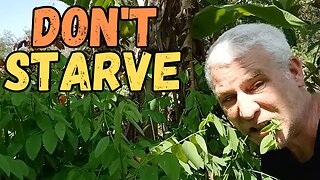 5:19
5:19
Tropicaire Homestead
10 months agoFood Shortages: Grow These Staple Crop Plants To Survive
31 -
 1:41
1:41
SWNS
1 year ago4 in 10 couldn’t imagine not being able to buy staple fruits and veggies in their local store
65 -
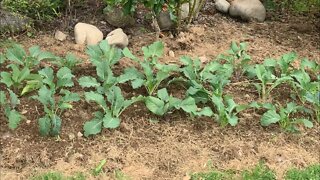 37:35
37:35
Darryl Talks About New Zealand
4 years ago $0.03 earnedHow to grow plants and seeds form store bought fruit and vegetables.
374 -
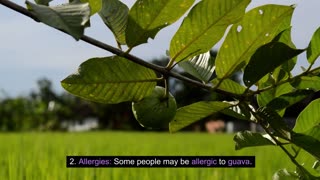 2:47
2:47
Gioslife
6 months agoThings you may not know about this tropical fruit Guava
55 -
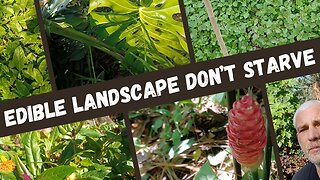 6:09
6:09
Tropicaire Homestead
10 months ago9 Must-Have Food Forest Plants for Your Edible Landscape!
1852 -
 8:18
8:18
The Ranch Network
1 year ago5 EASY Steps to QUICKLY Grow BANANAS!
148 -
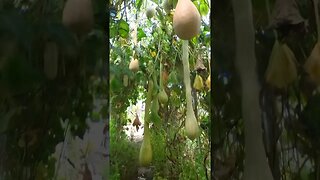 0:55
0:55
VastHarvestPermaculture
11 months agoSo much food from this plant. This is a must grow.
9 -
 15:17
15:17
Edge of Nowhere Farm
1 year agoTrying 6 Different Guava Varieties | Will We Find One We Like?
4